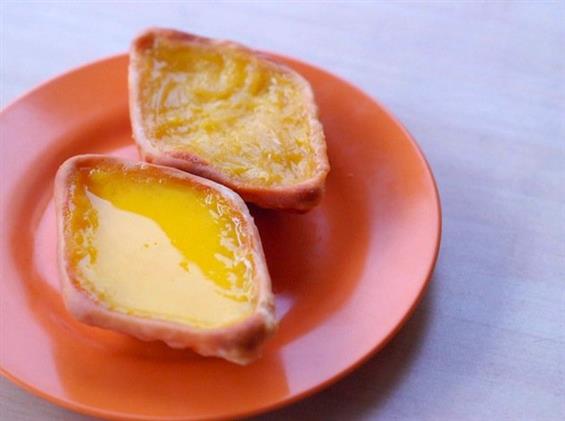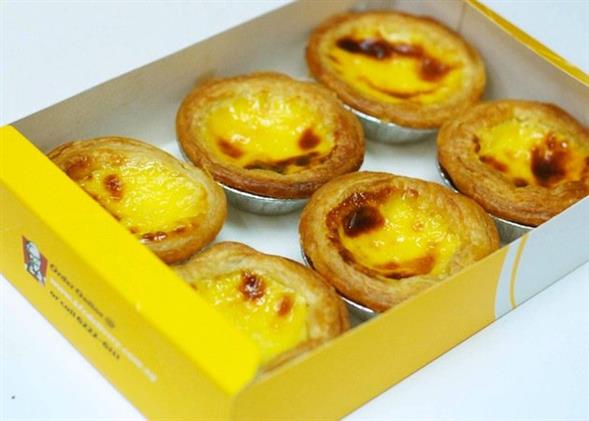
Egg tarts – dan tat or pastel de nata?
By Elaine Ng - Saturday, Apr 13, 2013
Besides the har gao and siu mai, one of the best parts of the popular Asian dim sum tradition would be the egg tart, which often marks the sweet end to a great meal.
But Chinese restaurants are not the only ones crazy about these ingots of sweet egg custard encased in either puff or short crust pastry. Our dear old Colonel Sanders have also adopted them on his menu in Asian countries and even came up with a chocolate variant.
This seemingly out of place dessert brings to mind the question of its origins. Is this well-loved treat a creation of the east or the west? Without a doubt, the ever popular Portuguese egg tarts — identified with its flaky puff pastry casing — were made popular in Hong Kong’s cha chan tengs and a must-have item on every self-respecting dim sum joint.
Bearing Hong Kong as well as neighbour Macau’s colonial history in mind, it is no surprise that one would notice the resemblance between the English custard tart as well as the Portuguese pastel de nata to this Chinese dessert.

Over two centuries back, egg whites were in high demand for the starching of clothes. The leftover egg yolks, not to be wasted by the virtuous monks and nuns, were then used in a variety of sweet pastry recipes including that of the pastel de nata. More specifically, the recipe for the Portuguese egg tart is credited to the Catholic nuns from the Jerónimos Monastery.
Far away from home, the Portuguese had the egg tarts recreated in Macau when they colonialised the region in the mid-16th century. Good food, like good news, tend to travel; it wasn’t before long the Portuguese gained a huge following in nearby Hong Kong. The much-loved Asian version of the egg tart is not dusted in nutmeg, cinnamon and powdered sugar as it is in Lisbon before consumption, though the essence — sweet, silky-smooth custard encased in flaky puff pastry — is very much similar.
The English egg tart, on the other hand, has a less likely claim to the egg tart. It includes milk and is less eggy — bearing even less resemblance to the current popular version as compared to the pastel de nata. The British also serve their custard tarts at room temperature rather than piping hot.

But just when we could conclude that the egg tart is a Western invention, we find out that it first appeared in records of the Manchu-Han Imperial Feast hosted by Emperor Kangxi, the fourth emperor of the Qing dynasty, in 1720. Held by the then 66-year old emperor, who was keen to unite the ruling people (the Manchu) and the commoners (the Han people), he had his chefs combine the best cuisines of both cultures for his birthday banquet despite the differences in cooking styles as well as ingredients.
In this 108-dish menu, and amongst luxurious dishes like Snowy Palm (bear claw with sturgeon, Golden Eyes and Burning Brain (bean curd in chicken, duck and cuckoo brains) and live monkey brain, came our little humble but long-loved egg tart. The exact recipe for this version may not have lasted through times but it is more likely that then the more common short crust pastry instead of puff pastry was used. Now, here’s some food for thought the next time you bite into an egg tart, whether as part of the family weekend dim sum gathering or a quick snack at home. So really, who created this golden treat — was it the English who came up with the egg custard, the Portuguese who put this sweet filling into a fabulous flaky pastry or the Chinese who has laid claims on it since the Manchurian times? Or perhaps, could this be a chicken and egg question?


